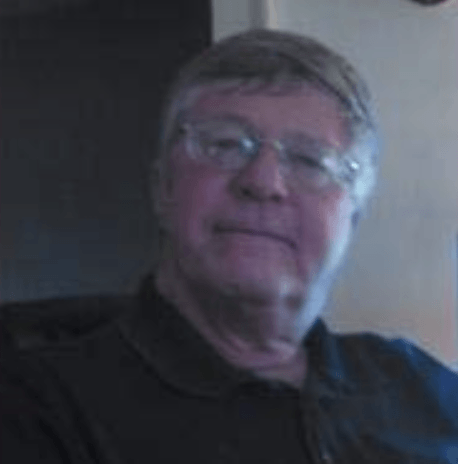Surviving Florida’s Ill Winds
| It wasn't a record you'd want to set: the first state since Texas in 1886 to be ravaged by at least three major hurricanes in one season. Florida, as everyone knows, was hit by Hurricanes Charley, Frances, Ivan, and Jeanne within the space of five weeks in August and September. (As of this writing, the hurricane season had several weeks to go until the traditional November 30 conclusion.) The personal devastation experienced by Floridians was immense, and many small businesses were put out of business for good. In the middle of it all were long-term care facilities housing some of the state's most vulnerable people. The facilities themselves, confronting not only storm damage but the prospects of a costly cleanup, were in frail condition, as well. How did they get through it? What did they learn? What happens next? Here are observations gleaned from providers and provider organizations by Edward Susman, a local writer on special assignment, and interviews with LTC association officials by Nursing Homes/Long Term Care Management Editor-in-Chief Richard L. Peck. By Edward Susman: "For us, evacuation was never really an option," said Daryl Miller, director of communications for the Joseph L. Morse Geriatric Center, Inc., in West Palm Beach. West Palm Beach, a community of 100,000 people, took staggering hits from the Labor Day Hurricane Frances and the Yom Kippur Hurricane Jeanne, three weeks later in September. "Our facility is rated to withstand a Category Five hurricane," Miller said, "so we are prepared to ride these storms out." She spoke as Jeanne gathered strength in the Atlantic and poised itself to slam into the Palm Beach County−Martin County areas on Florida's east coast. "During Frances, our plans worked fairly well," Miller said. "We had one of the buildings on our campus suffer some water damage when the roof became compromised, and that forced us to evacuate a few rooms on one floor to another area on the campus. But we had foreseen in our plan the need to do that." In addition to the 280 residents at the Morse Center, during Frances the center also housed the 300 staff members of the center, 150 significant others and spouses of the residents, and 70 children of all ages, from infants to teens. The one thing that the Morse Center had not collected among its preparatory supplies was a fuse for the generator that was keeping emergency equipment running. Fulfilling Murphy's Law, the fuse failed just at the time the generators were supplying power to Wet/Dry Vacs that were handling the leaks caused by the roof failure. "We had to scramble around to find another fuse, which was kind of unique," Miller explained, "so we were out of service with that generator for about three hours. "What was amazing was the way everyone pitched in to help," she said. The teenage children of staff and residents took on the task of running meals up and down the stairs as the center served more than 2,000 meals. "We were good Scouts," Miller said. "We were prepared. We didn't run out of food, we didn't run out of water, and we didn't run out of batteries." Farther north, and closer to the landfall of Frances and Jeanne, Jennifer Jasper, administrator of the Edgewater Manor retirement center in Hobe Sound, Florida, was less frustrated by the storms than by the response of the local power company, Florida Power & Light Company (FPL). "The lesson I learned from Frances," she said, "is that maybe I have to run for Congress or something in order to get something done about nursing homes' priority status." Nursing homes are not listed among priority customers for restoration of electrical power. Although Edgewater Manor suffered little damage from the storm, it was without power for six days, Jasper said, relying on generators to provide power for some lighting, refrigeration for supplies, and oxygen equipment. "The deli where we got our meals to feed our residents had power. The laundry where we had our linens and clothes washed had power. The state of Florida does not give nursing homes the priority that we need." (Association executives had comments on this, as well; see below.) |
| "Another lesson I learned from this experience," Jasper said, "was that you have to take time to breathe and relax. You have to be prepared and take everything with a grain of salt. More than that, you need a strong team to get you through these things." Many members of the staff were able to call upon long-time friendships and the "good-ole-boy" network to make sure supplies were obtained. "A lot of people who work here know people who know people," Jasper said, "so when we needed extra generators, somehow they were able to find them. When things break down, it usually is due to a breakdown in communication. When you let people know what your needs are, they usually find a way to solve the problems." When Hurricane Jeanne finally decided where she wanted to go, the storm roared west across Florida from Martin County, then over nearby Orlando, and then crossed briefly into the Gulf of Mexico north of Tampa. This gave Janie Williams, executive director of Atria Evergreen Woods in Spring Hill, Florida, the dubious experience of trying to cope with four hurricanes in six weeks. During Hurricane Charley, the facility served as the evacuation site for other Atria-owned facilities in hard-hit Pasco County; Hurricane Frances knocked out power to the facility for five days when that storm hit Spring Hill as it crossed the state-the same path Jeanne took later. Before Jeanne, Hurricane Ivan roared up the Gulf of Mexico, dousing the area with rains and tropical storm-force winds. "We had disaster plans in place," Williams said, "and by and large they worked out well. But we learned that concrete thinking doesn't work well in a hurricane. We had to tweak some of these plans as we went along." The Spring Hill facility lost 15 to 20 trees in the storms and had those long-term power outages that make life miserable in air-conditioning−dependent Florida during the summer. But the generators were able to keep critical functions operating. "We had enough diesel fuel on hand, so we didn't have any problems with the generators. We had three to seven days' supplies of food on hand, so that wasn't a problem either." However, the facility laundry was out of service, which led to a shortage of towels and paper products, even though Williams had stocked up on these when the projections showed that Jeanne was on her way. "We topped off the gasoline and resupplied the food. We put the staff on call. We learned that transportation to and from the facility was an issue because of downed trees and power lines. We learned that we have to have a plan for the storms, we have to be aware of the plan, and we have to be flexible at times. The plan is only a guideline." The Professional Associations Respond Robin Bleier, RN, Second Vice-President, Florida Health Care Association (FHCA), and consultant, RB Health Partners: "During Hurricane Charley, southwest Florida was pummeled. During Hurricane Frances, the largest hurricane I have ever seen, no part of Florida was spared contact or damage. At one point, the radar showed that the entire state was covered by the storm. The inland areas that had previously thought of themselves as immune and bulletproof from hurricanes learned how unrealistic that perception was. "During Charley, I was contracted by the Department of Health [Sarasota area] to establish and run a special medical needs [SMN] shelter in a former nursing facility in the Venice area. My tour lasted approximately two weeks and, although rewarding, was exhausting. I entered the facility to ready it and receive SMN individuals on August 16 and did not leave the facility until August 21. When I was able to sleep, four to six hours a night during the first week, it was on a mattress in the nursing facility. My services ended a week before Frances made landfall. "During Frances, I assisted Florida Health Care Association staff and other volunteers to work with SNFs and assisted living facilities [ALFs]. Although the Florida facilities had clearly prepared disaster manuals in hand-a state requirement-and one to two weeks of supplies available, commodities such as ice, water, extra batteries, and fuel [diesel and/or gasoline] were still needed in almost two dozen facilities. "But then came the most difficult challenge. Sadly, I learned that for purposes of electrical supply, the state of Florida views SNFs and ALFs as businesses, not healthcare institutions. This had severe results for the residents involved. In one instance I called a local emergency operations center [EOC] to discuss a facility's need for electricity. It had been on a generator for five days, with no guarantee from the local power company that power would be restored the next day. 'Businesses,' I was told, were 'not priorities.' I explained that the facility was a SNF, which meant that it had medically complex patients who were on ventilators, had tracheotomies, were oxygen-dependent, had diabetes, used intravenous medications, had breathing treatments, and so forth-just like a hospital. The response: Military, emergency management, and hospitals were priority, not SNFs. Even ALFs these days house fragile elderly who often have chronic medical conditions that can easily destabilize after traumatic events such as a hurricane. This didn't seem to matter either. |
| Donations Both associations have set up addresses to send donations to help Florida facilities with relief efforts: Florida Health Care Association- Disaster Relief Florida Association of Homes for the Aging-Disaster Relief |
| "The lesson here is simple: Educate lawmakers to legislate commonsense approaches, such as defining SNFs as SMN shelters for the sake of power restoration. Mandate that all state agency staff, including surveyors, be included in disaster relief efforts and not, as happened with Hurricane Frances, try to conduct misguided regulatory enforcement efforts." LuMarie Polivka-West, MSP, director of policy and quality assurance, FHCA: "We learned from Charley how important it is to be prepared. We were better prepared for each hurricane as it came and have learned from each. The most important thing we learned: the importance of electrical power. Nursing homes are not considered high-priority for this. We will address this legislatively, but in the meantime the press has been tremendously important. We get a response from the power company when there's a story in the paper. I think that part of the problem is that there is still the concept of the nursing facility as an 'old folks' home' that doesn't need electricity any more than anyone else. It is also interesting that Florida has one of the lowest percentages of institutionalized elderly in the country: 2.5% versus the national average of 5%. But a lot of people have lost their homes, so there's no home health for them anymore. Many of them ended up in shelters, and people from government agencies were saying they must have come from nursing homes because they were so debilitated. We told the officials and everyone else via the media that nursing homes were taking care of their own. In fact, nursing homes became shelters themselves, taking care of residents' and staffs' families. |
| "We had a lot of untold stories of heroism, of staff staying and taking care of residents and families, even though they knew they were sustaining major personal losses involving their homes and cars. I also remember talking to one facility administrator over the phone as the roof peeled off his building; he showed no sense of panic, he was under control. We've had executives rushing fuel to facilities in need, and a local mobile x-ray vendor made their vans available for transporting ice. One long-term care company opened its laundry to the evening and night shifts of other facilities whose laundries were down. And, when all was said and done, no residents were hurt. "As for rebuilding, we're in a somewhat precarious situation. It is difficult to get financing for construction because the major liability insurers have left the state. Unfortunately, the tort reform legislation passed earlier this year did not bring these companies back." Janegale Boyd, president and CEO, Florida Association of Homes for the Aging (FAHA): "The lessons we've learned? No matter who you have mutual aid agreements with, when you have 58 of 67 counties in the state under watch or evacuation orders, your plans need to include resources from out of state. When I heard from a media person that there were complaints that facilities didn't seem to have emergency disaster plans in effect, I responded that you can't get a license in this state without emergency response plans approved by local and county agencies, but a lot of the planning went out the door when 58 counties got listed. How do you deal with something like that? We were e-mailing Georgia and Alabama looking for places to transfer residents. "Also, our plans call for facilities to be self-sufficient for three days; I'd say seven to ten days is more realistic. Power grids were so destroyed that people went eight to ten days before power was restored. And nursing homes and assisted living were not a priority; we had a case where a nearby Dairy Queen and grocery store had power restored five days before the skilled nursing facility did. We have asked for priority status, but power companies don't like it because the more people in the general population that they restore power to in a timely way, the better it looks for them. "Nursing homes are required by law to run all emergency systems by generator, but a week without air-conditioning in this state is a long time. Even when they had been test-run regularly, outdoor generators still failed because of excessive load after being beat on by a Category Four hurricane. I know there'll be a lot of discussion about requiring providers to have large enough generators to power the whole building from now on, but that gets expensive. "The good news about generators was that we had developed a special relationship with fuel suppliers after Charley so that we could get fuel to members within three hours or less. As an association, we did things we never dreamed of doing. We set up a disaster-relief fund, which is tax-deductible, but we also created an 'adopt a home' program for people who want to donate directly rather than through us. Cash donations, toilet paper, adult diapers, linens, medical supplies of all kinds, batteries, nutritional products, shampoo, water pitchers, you name it-the outpouring has been incredible. And we had our members helping members, even though they were terribly stricken themselves. We had nursing homes come to aid, for example, of a HUD housing community that had 220 residents without power, food, or water. The community's service coordinator couldn't get through to the Red Cross, which was already overloaded. But, within two hours, nursing facilities had sent ice, water, oxygen supplies, and food. There was another facility where the sewer system was backing up, because it ran on electricity that had shut down. One community had a large generator they had rented and, even though they had experienced major damage themselves, they donated the generator and an electrician to go with it to help that facility pump out its waste treatment lines. It was neighbor helping neighbor. "We had facilities taking in families. Florida regulations say that facilities can only store supplies up to certain ceiling height, but a week's supplies for 250 people is a lot. Ice became the big thing. We have been trucking it in large coolers all over; I've learned how long ice lasts in coolers. "We're facing a considerable problem with facility repairs. We had one facility that had sustained $1 million in roof damage, patched it, but got hit again, with damages now up to $2.5 million. Then there's the cost of property insurance, which became very expensive after Hurricane Andrew in 1992. We have high regular deductibles, plus 'windstorm deductibles' of 2 to 5% of the total value of the property-and that's per occurrence. Some places were hit with three deductibles. As an example, you could have a $20,000 routine deductible each time, plus 5% of, say, a $1 million property; multiply this by three, and you've laid out $210,000 out of your own pocket before you see one cent from insurance." To comment on this article, please send e-mail to 2peck1104@nursinghomesmagazine.com. |

Richard L. Peck was editor in chief of I Advance Senior Care / Long-Term Living for 18 years. For eight years previous to that, he served as editor of the clinical magazine Geriatrics. He has written extensively on developments in the field of senior care and housing.
Related Articles
Topics: Articles , Operations











